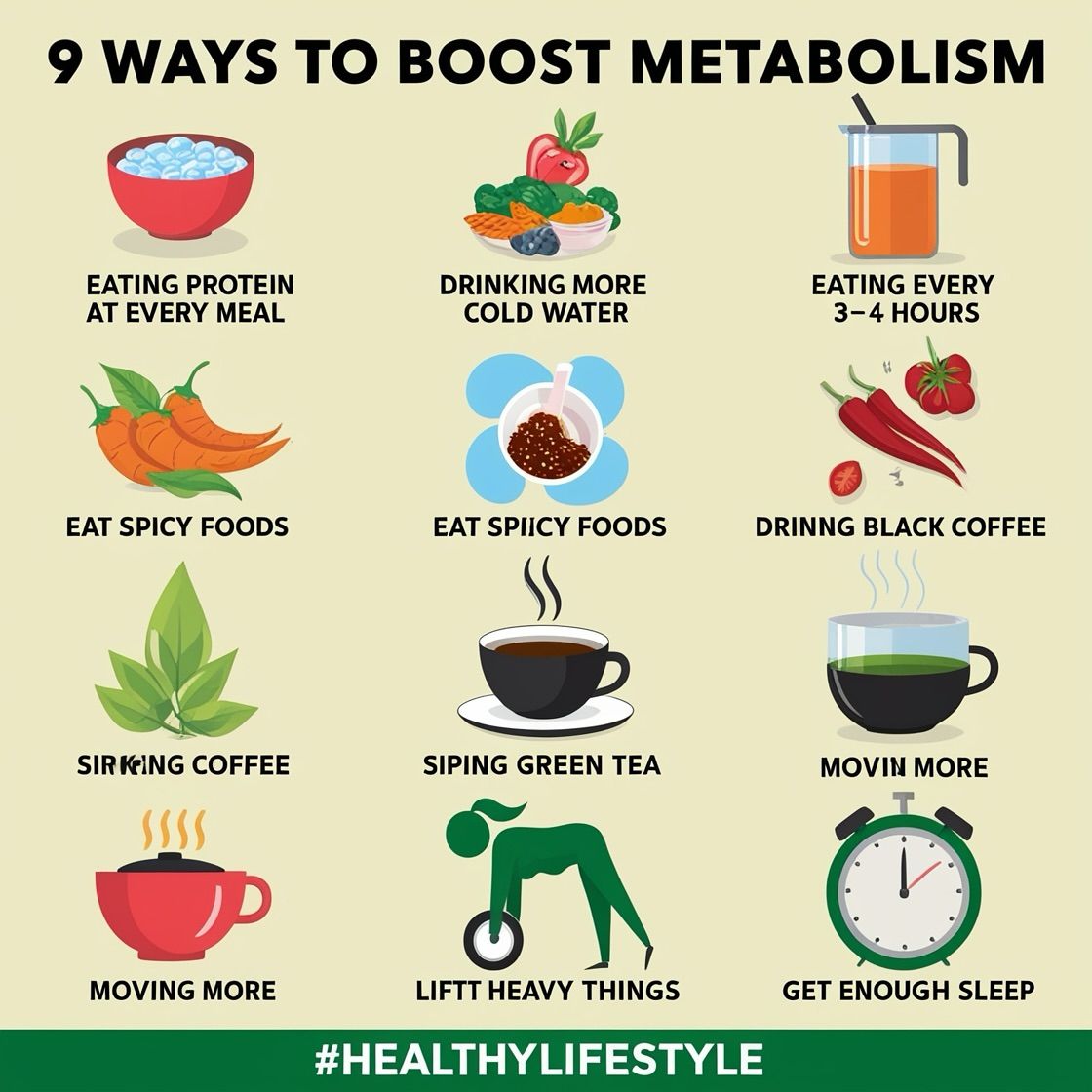If you’ve been working hard at the gym and cleaning up your diet but the scale refuses to budge, the missing link might not be your workouts—or even your meals. It could be your sleep.
Research shows that poor sleep can slow your metabolism by up to 20%, increase hunger hormones, and lead to fat storage—especially around the belly. On the flip side, consistently getting deep, restorative sleep can help you burn more calories at rest and lose up to 8 pounds in just one month without changing your diet.

The Sleep-Metabolism Connection
Your metabolism isn’t just about how much you move during the day—it’s also heavily influenced by what happens while you sleep. Here’s how the two are connected:
-
Hormonal Regulation – Sleep affects the hormones leptin and ghrelin, which control hunger and satiety. Poor sleep increases ghrelin (hunger) and decreases leptin (fullness), making you overeat.
-
Insulin Sensitivity – Inadequate rest can make your body more insulin resistant, which promotes fat storage.
-
Muscle Recovery – During deep sleep, growth hormone is released, helping you build muscle. More muscle = higher resting metabolic rate.
-
Thermogenesis – Your body’s temperature control during sleep affects calorie burn. Quality sleep supports optimal thermogenesis.
Aiming for 7–9 hours of quality sleep is one of the most underrated fat-loss strategies available.
The Ideal Bedtime Routine for Faster Metabolism
Think of your bedtime routine as your metabolic warm-up for the night. These steps help your body transition into deep, restorative sleep faster.
1. Set a Consistent Sleep Schedule
Going to bed and waking up at the same time every day helps regulate your circadian rhythm—the internal clock that controls hormone release and metabolism.
2. Dim the Lights One Hour Before Bed
Bright light, especially blue light from screens, suppresses melatonin production. Use warm, dim lighting or blue-light-blocking glasses.
3. Cool Down Your Bedroom
Studies show a temperature of 60–67°F (15–19°C) optimizes sleep quality and supports fat-burning brown fat activation.
4. Practice a Wind-Down Ritual
This could be 10 minutes of deep breathing, light stretching, or reading a physical book. It signals to your body that it’s time to rest.
Foods That Improve Sleep Quality (and Metabolism)
Your diet can help you sleep better and rev up your metabolism at night.
1. Tryptophan-Rich Foods
Turkey, chicken, and pumpkin seeds are high in tryptophan, an amino acid that helps produce melatonin and serotonin.
2. Magnesium Powerhouses
Almonds, spinach, and dark chocolate (in moderation) relax muscles and reduce stress hormones.
3. Slow-Digesting Proteins
Casein protein (found in cottage cheese and Greek yogurt) provides amino acids overnight to maintain muscle mass.
4. Herbal Sleep Aids
Chamomile and valerian root tea can reduce anxiety and promote deeper sleep.
Avoid before bed: caffeine, alcohol, and high-sugar snacks, all of which can disrupt your sleep cycles and blood sugar balance.
Tech & Gadgets to Help You Sleep and Burn More Fat
If you’re serious about optimizing sleep for metabolism, certain devices can help.
1. Sleep Trackers
Wearables like Oura Ring or WHOOP monitor your sleep cycles, heart rate variability (HRV), and body temperature to show how well you’re recovering.
2. Smart Mattresses
Options like Eight Sleep can cool your bed to the optimal fat-burning temperature and adjust it throughout the night.
3. White Noise Machines
Steady background sound can prevent waking during deep sleep stages.
4. Blue Light Glasses
Worn 1–2 hours before bed, these reduce melatonin suppression from screens.
Tracking Progress: Is Sleep Boosting Your Metabolism?
To see if your new sleep habits are paying off:
-
Track your weight and body composition weekly (not daily).
-
Monitor hunger and energy levels—improved sleep often reduces cravings and stabilizes mood.
-
Check resting heart rate (RHR)—a lower RHR in the morning usually means better recovery and metabolism.
Many people report losing 4–8 lbs in the first month of prioritizing sleep, simply from hormonal balance and reduced overeating.
7-Day Sleep Optimization Plan for Fat Loss
Day 1–2: Set your consistent bedtime and wake-up time.
Day 3–4: Remove caffeine after 2 PM, dim lights early.
Day 5–6: Add magnesium-rich evening snack (like almonds).
Day 7: Evaluate energy, cravings, and sleep quality—adjust as needed.
Repeat for 4 weeks and watch the results add up.
Final Thoughts
When it comes to weight loss, sleep is your silent fat-burning partner. By syncing your bedtime routine, eating sleep-supportive foods, and using simple tech tools, you can turn your nights into powerful metabolism-boosting sessions.
Remember—fat loss isn’t only about how hard you work during the day. Sometimes, the biggest results happen while you rest.
With these hacks, you could see up to 8 pounds lost in just one month, simply by giving your body the deep, restorative sleep it needs.